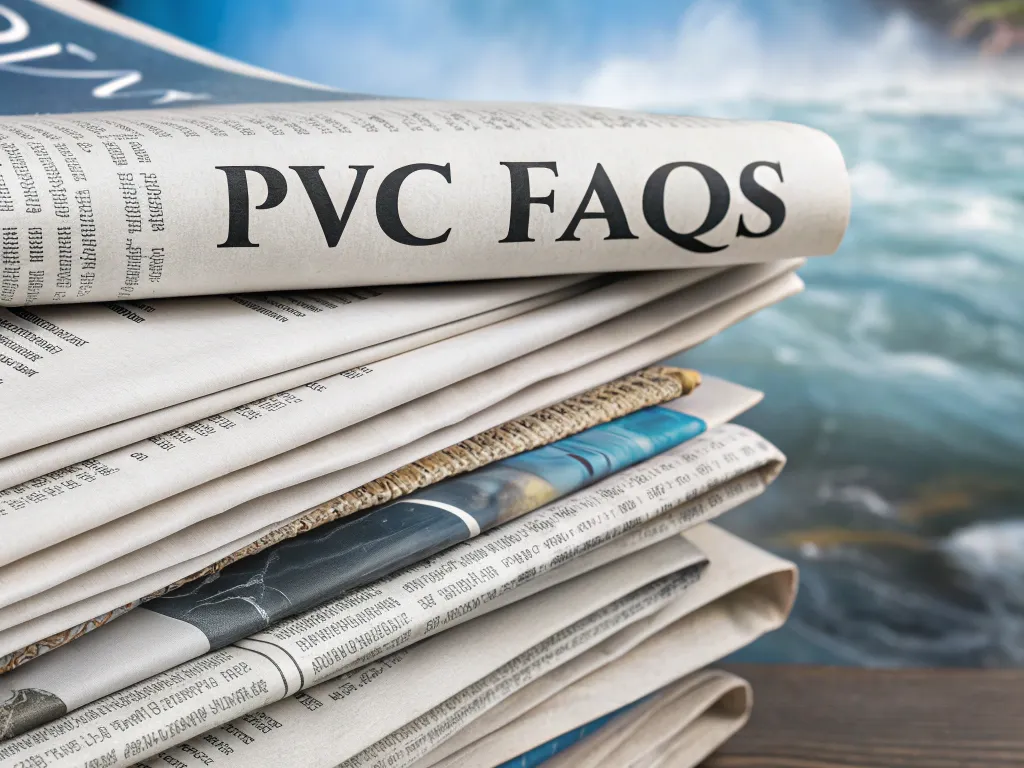Što znači 'PVC'?
Polivinil klorid. PVC se obično naziva vinil, a ta dva naziva mogu se koristiti naizmjenično. Vinilna smola može se kombinirati sa širokim rasponom drugih materijala kao što su plastifikatori, stabilizatori, maziva i bojila, ovisno o zahtjevima krajnjeg proizvoda. Ne koriste svi proizvodi od vinila istu kombinaciju materijala.
Koliko proizvedenog klora ide u industriju PVC-a?
U svijetu se oko 35% proizvedenog klora koristi u PVC industriji. Klor je jedan od elemenata koji se najčešće pojavljuju. Umjetni klor je vitalan za mnoge industrije koje proizvode vrijedne moderne proizvode.
Mogu li ljudi koji rade u PVC industriji dobiti rak od monomera vinil klorida (VCM)?
Ranih 1970-ih otkriveno je da je monomer vinil klorida kancerogena tvar. Utvrđeno je da produljena i visoka izloženost među onima koji rade s materijalom u PVC industriji uzrokuje rijedak oblik raka, angiosarkom jetre. Nakon što je veza otkrivena, industrija i vlade brzo su poduzele mjere kako bi smanjile razinu potencijalne izloženosti. Granice izloženosti sada su ispod jedne tisućinke onoga što su bile, a od tada nije poznato da su otkriveni nikakvi slučajevi raka kod radnika koji su se pridružili industriji.
Ispuštaju li VCM ili PVC tvornice velike količine dioksina u okoliš?
Ne. Studije u Australiji, SAD-u, Velikoj Britaniji i Nizozemskoj pokazale su da se samo vrlo male količine dioksina mogu pripisati proizvodnji VCM-a ili PVC-a. Emisije dioksina u Europi i SAD-u su se prepolovile u posljednjih trideset godina, dok je proizvodnja PVC-a porasla 300%. U Australiji se procjenjuje da 60-80% emisija dioksina u zrak nastaje spaljivanjem poljoprivrednih proizvoda, izgaranjem drva u stambenim objektima i šumskim požarima. Proizvodnja u Australiji svih kemikalija temeljenih na kloru (tj. halogenih kemikalija) doprinosi manje od 1% ukupnom iznosu.
Jesu li dioksini prisutni u PVC-u koji se koristi za izradu svakodnevnih proizvoda?
Ne. Dioksini nisu pronađeni u PVC polimeru na granicama detekcije, čak ni korištenjem današnjih vrlo naprednih tehnika mjerenja.
Je li PVC folija sigurna?
Da. Plastificirane PVC folije uvelike su pridonijele sigurnosti hrane jer imaju svojstva koja istovremeno štite i čuvaju hranu. Bilo koji materijal koji se koristi za pakiranje hrane može dovesti do prijenosa njegovih sastojaka na hranu. Migracija plastifikatora iz PVC folije je na razinama koje međunarodne zdravstvene i zakonodavne vlasti smatraju bezopasnima. Sve folije proizvedene u Australiji u skladu su s australskim standardom za plastiku i kontakt s hranom, AS 2070.
Što su plastifikatori i zašto su PVC-u potrebni?
Kako bi PVC bio mekan i fleksibilan, dodaju se plastifikatori. Niz različitih proizvoda koristi se kao plastifikatori, uključujući kategorije kemikalija poznatih kao ftalati (ili ftalatni esteri), citrati i adipati.
Grupe za zaštitu okoliša tvrde da plastifikatori koji se koriste u PVC-u ometaju ljudski hormonski sustav. Ako postoji ikakav rizik od ovoga, trebamo li i dalje koristiti te tvari u PVC-u?
Ftalatni plastifikatori koriste se diljem svijeta više od četrdeset godina i opsežno su proučavani njihovi učinci na zdravlje. Ftalati su skupina kemikalija, od kojih svaka ima svoj profil sigurnosti i toksičnosti, iako se mogu grupirati prema molekularnoj težini u ftalate visoke molekularne težine (HMW) i niske molekularne težine (LMW). Čini se iz znanstvenih studija da ftalati općenito nemaju značajan učinak na ženski hormon, estrogen. Istraživanja su se umjesto toga okrenula mogućnosti androgenih učinaka (to jest, učinaka na muški hormon). Rane studije sugeriraju da bi učinci mogli biti mogući kod laboratorijskih životinja hranjenih visokim dozama LMW ftalata. Postoji određena zabrinutost oko nekih ftalata s niskom masom, kao što je DEHP, a njihova je uporaba u određenim proizvodima ograničena u nekim zemljama. Međutim, HMW ftalate, kao što su DINP i DIDP, ocijenili su regulatorni organi i utvrdili da su sigurni za upotrebu u svim trenutnim primjenama.
Je li istina da PVC proizvodi ispuštaju dioksine kada gore?
Dioksini nastaju spaljivanjem organskih materijala u prisutnosti klora. To se može dogoditi u prirodnim događajima kao što su šumski požari i vulkanske erupcije, kao iu industrijskim procesima i spaljivanju otpada. Stvaranje dioksina ovisi o uvjetima izgaranja, kao što su temperatura i dostupnost kisika, a ne o prisutnosti PVC-a. Moderna postrojenja za spaljivanje sa strogim nadzorom temperature i emisija proizvode zanemarive količine dioksina.
Može li se PVC reciklirati?
Da, PVC se može reciklirati. Postoje uspostavljeni procesi za recikliranje postindustrijskog i post-potrošačkog PVC otpada. Mehaničko recikliranje uključuje mljevenje PVC proizvoda u male čestice, koje se zatim tope i preoblikuju u nove proizvode. Kemijsko recikliranje razgrađuje PVC na njegove kemijske komponente, koje se mogu koristiti za proizvodnju novog PVC-a ili drugih materijala. Vinyl Council of Australia ima inicijative za promicanje i olakšavanje recikliranja PVC proizvoda.
Je li upotreba PVC-a u medicini sigurna?
PVC se u medicinskim primjenama koristi više od 50 godina i cijenjen je zbog svoje čistoće, fleksibilnosti, čvrstoće i sposobnosti sterilizacije. Koristi se u proizvodima kao što su vrećice za krv, IV spremnici i cijevi. Izražena je zabrinutost zbog ispiranja plastifikatora, posebice DEHP-a, iz PVC medicinskih uređaja. Regulatorna tijela procijenila su rizike i, u nekim slučajevima, preporučila korištenje alternativnih materijala za određene visokorizične pacijente, poput novorođenčadi. Međutim, PVC ostaje naširoko korišten i važan materijal u medicini.
Što Vinyl Council of Australia radi kako bi se pozabavila ekološkim problemima vezanim uz PVC?
Australsko vijeće za vinil osnovalo je Program upravljanja PVC-om, koji je dobrovoljna inicijativa usmjerena na poboljšanje ekoloških i zdravstvenih učinaka PVC proizvoda tijekom njihovog životnog ciklusa. Program uključuje obveze prema najboljoj praksi proizvodnje, sigurnoj i održivoj upotrebi aditiva, energetskoj učinkovitosti, učinkovitosti resursa i transparentnosti. Vijeće također promiče inicijative za recikliranje i surađuje s dionicima kako bi se riješili problemi i poboljšala održivost PVC proizvoda.
Postoje li alternative PVC-u koje su ekološki prihvatljivije?
Postoje alternativni materijali PVC-u, poput polietilena, polipropilena i metala, od kojih svaki ima svoj ekološki profil. Procjene životnog ciklusa (LCA) su to pokazale



